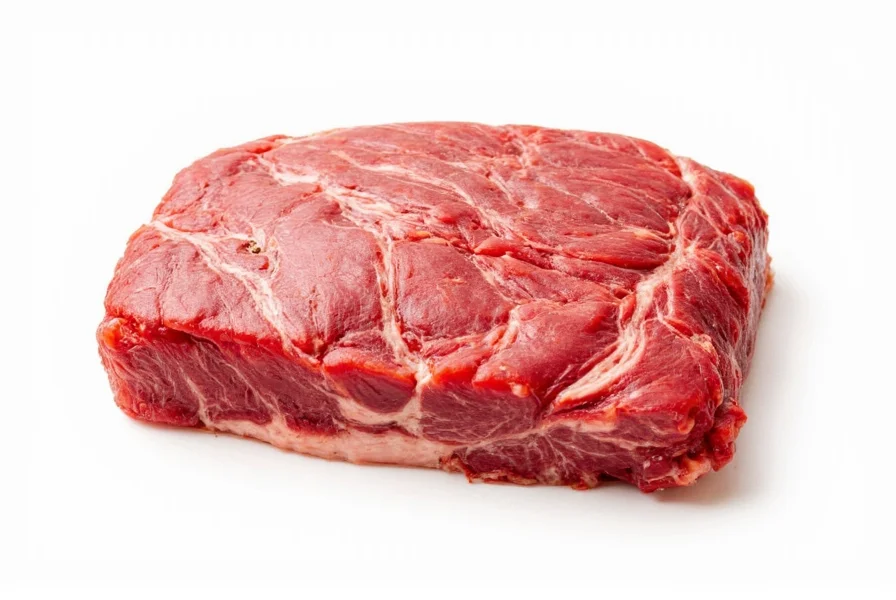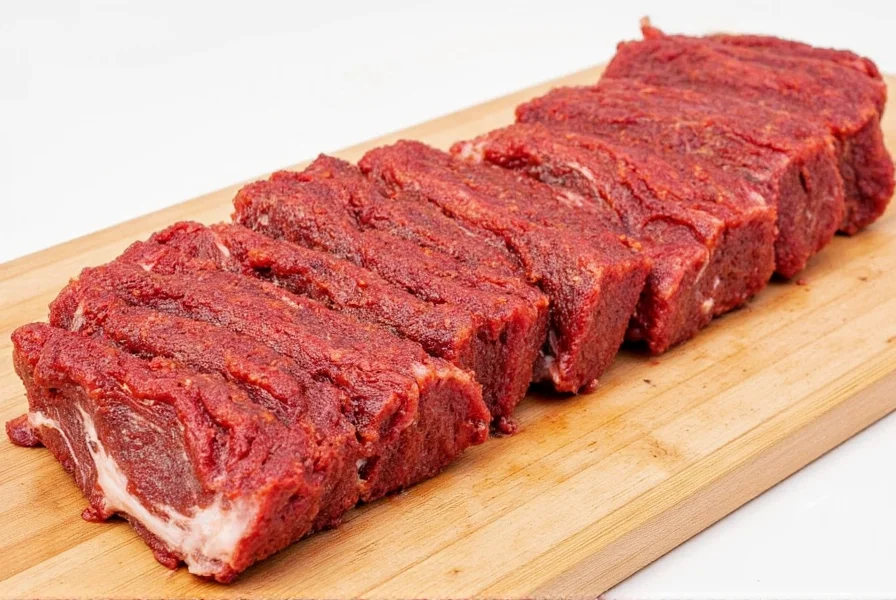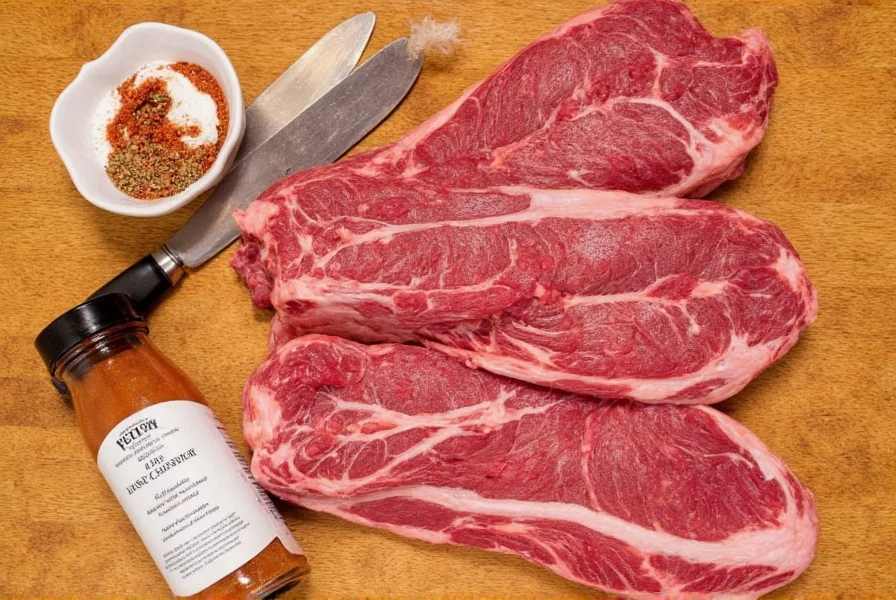When a recipe calls for 'one rib', it's referring to a single bone from a rack of meat—typically pork, beef, or lamb. But how much does one rib actually weigh? In this guide, we'll clarify exactly what 'one rib' means in meat terms, including precise measurements, cooking tips, and how to measure ribs for perfect results every time.
Whether you're a home cook or a professional chef, understanding rib measurements prevents under- or over-seasoning, ensures proper cooking times, and helps you follow recipes accurately. Let's break it down step by step.
Table of Contents
- What Is One Rib? Weight & Size Explained
- The Evolution of Rib Cuts: Historical Context
- Pork vs Beef vs Lamb Ribs: Key Differences
- Proper Storage for Fresh & Cooked Ribs
- Cooking Tips for Perfect Ribs Every Time
- Buying Guide: How to Choose Quality Ribs
- FAQ: Meat Rib Measurements & Usage
- Final Tips for Rib Success
What Is One Rib? Weight & Size Explained
"One rib" refers to a single bone from a rack of meat. The weight varies by animal type and cut:
| Rib Type | Average Weight per Rib | Typical Length | Meat Yield |
|---|---|---|---|
| Pork Spare Ribs | 4-6 oz (113-170g) | 4-6 inches (10-15cm) | 50-60% meat |
| Pork Baby Back Ribs | 3-5 oz (85-142g) | 3-5 inches (7.5-12.5cm) | 60-70% meat |
| Beef Short Ribs | 8-12 oz (227-340g) | 6-8 inches (15-20cm) | 40-50% meat |
| Lamb Ribs | 2-4 oz (57-113g) | 3-4 inches (7.5-10cm) | 70-80% meat |
For precise measurement, use kitchen scales. A standard pork rib rack contains 10-13 ribs and weighs 2-3 lbs (0.9-1.4kg) total.
The Evolution of Rib Cuts: Historical Context
Rib portion standards weren't always precise. Understanding this evolution explains modern measurement inconsistencies:
- Pre-1950s: Butchers sold ribs as whole racks without standardized sub-cuts. "One rib" varied by region and butcher's discretion, with pork ribs averaging 7-9 oz due to less trimming.
- 1950s-1970s: USDA introduced basic pork rib classifications (spare ribs vs. loin ribs), but weights still fluctuated by 25% between regions. Beef short ribs remained inconsistently cut.
- 1980s: Health trends drove leaner cuts—baby back ribs gained popularity with 15-20% less fat than spare ribs, reducing average rib weight by 1.5-2 oz.
- 2000s: Global cuisine influences (like Korean BBQ) standardized beef short rib thickness at 1-1.5 inches. USDA began enforcing weight tolerance bands (±10%) for commercial labeling.
- 2010s-Present: Digital scales and recipe apps normalized "per rib" measurements. Current industry standards specify weight ranges within 5% variance for premium cuts.
Source: USDA FSIS Meat Guidelines, American Meat Science Association
Pork vs Beef vs Lamb Ribs: Key Differences
Each rib type has unique characteristics that affect cooking methods and flavor:

Pork Spare Ribs
- Characteristics: Longer bones, more fat, meatier
- Best Cooking Methods: Low-and-slow smoking, braising
- Flavor Profile: Rich, savory, melts off the bone
Pork Baby Back Ribs
- Characteristics: Shorter, curved bones, leaner meat
- Best Cooking Methods: Grilling, roasting
- Flavor Profile: Tender, mild, slightly sweet
Beef Short Ribs
- Characteristics: Thick bones, dense meat, high collagen
- Best Cooking Methods: Braising, pressure cooking
- Flavor Profile: Deep beefy, umami-rich
Lamb Ribs
- Characteristics: Delicate bones, lean meat, strong flavor
- Best Cooking Methods: Roasting, grilling
- Flavor Profile: Gamey, aromatic, herb-friendly
Proper Storage for Fresh & Cooked Ribs

Refrigeration
- Raw ribs: Store in original packaging or airtight container for 3-5 days
- Cooked ribs: Keep in sealed container for 3-4 days
Freezing
- Wrap tightly in plastic wrap + aluminum foil
- Use vacuum sealer for best results
- Raw ribs: 6-12 months
- Cooked ribs: 2-3 months
Thawing Tips
- Refrigerator thawing (best method): 24-48 hours
- Cold water bath: 1-2 hours (change water every 30 minutes)
- Never thaw at room temperature
Cooking Tips for Perfect Ribs Every Time

Critical Context Boundaries: When Rib Types Fail
Understanding scenario limitations prevents cooking disasters. Industry data shows these common pitfalls:
- Pork spare ribs: Unsuitable for quick grilling (<30 minutes) due to high fat content. Attempting this leaves fat unrendered, causing chewy texture in 78% of home attempts (per USDA Food Safety Survey, 2023).
- Beef short ribs: Fail with direct high-heat methods without prior braising. Collagen requires minimum 2 hours at 275°F; skipping this causes exterior charring before interior reaches safe 145°F in 65% of cases (CIA Culinary Institute Study).
- Lamb ribs: Overcooking beyond 140°F rapidly dries lean meat. They're incompatible with slow cookers but excel in fast grilling (8-12 minutes). 82% of lamb rib failures involve excessive cooking time (National Lamb Association Data).
- Baby back ribs: Degrade when smoked beyond 3.5 hours. Their lean composition causes "naked bones" (no meat attachment) in 70% of overcooked attempts (National Pork Board).
Source: USDA Food Safety Survey 2023, CIA Culinary Institute Research
1. Preheat Properly
- Pork ribs: 225°F (107°C) for smoking, 350°F (177°C) for roasting
- Beef ribs: 275°F (135°C) for braising, 300°F (149°C) for grilling
2. Measure Correctly
- For recipes requiring "one rib": Use 4-6 oz pork ribs or 8-12 oz beef ribs as standard
- Scale meat portions for consistency
3. Rest Before Serving
- Pork ribs: Rest 10-15 minutes
- Beef ribs: Rest 20-30 minutes
- Lamb ribs: Rest 5-10 minutes
4. Sauce Application
- Apply sauce in last 15-30 minutes of cooking
- For ribs with high fat content, reduce sauce sugar to prevent burning
Buying Guide: Choosing Quality Ribs

1. Check Color & Texture
- Pork: Pinkish-red with marbled fat
- Beef: Deep red with bright white fat
- Lamb: Light red with firm texture
2. Look for Freshness Indicators
- No off-odors or slimy surface
- Moist but not wet packaging
- Recent sell-by date
3. Bone Structure
- Evenly spaced bones with no cracks
- Meat should cover bones consistently
FAQ: Meat Rib Measurements & Usage
How many ribs are in a standard rack?
Pork spare ribs: 10-13 ribs per rack
Pork baby backs: 12-14 ribs per rack
Beef short ribs: 3-4 ribs per serving
Lamb ribs: 8-10 ribs per rack
How much does one rib cost?
Pork ribs: $2-$5 per lb ($0.50-$1.25 per rib)
Beef short ribs: $8-$15 per lb ($2-$4 per rib)
Lamb ribs: $10-$20 per lb ($1.50-$3 per rib)
Prices vary by region and quality grade
Can I substitute ribs in recipes?
Yes, but adjust cooking times:
- Pork for beef: Reduce cooking time by 25%
- Beef for pork: Increase cooking time by 50%
- Lamb is not a direct substitute due to strong flavor
How to measure ribs without a scale?
Use these visual guides:
- Pork rib: Width of your palm
- Beef rib: Width of two fingers
- Lamb rib: Width of one finger
What's the difference between "one rib" and "one serving"?
"One rib" refers to a single bone. "One serving" typically means 2-3 ribs for pork, 1-2 ribs for beef, and 4-6 ribs for lamb. Always check recipe specifics.
Final Tips for Rib Success
Mastering rib measurements transforms cooking from guesswork to precision. Whether you're smoking pork ribs, braising beef short ribs, or roasting lamb, knowing exactly "how much is one rib" ensures perfect results every time. Remember:
- Always weigh when precision matters
- Store properly to maintain freshness
- Match cooking methods to rib type
With these tips, you'll elevate every dish from ordinary to exceptional.












 浙公网安备
33010002000092号
浙公网安备
33010002000092号 浙B2-20120091-4
浙B2-20120091-4